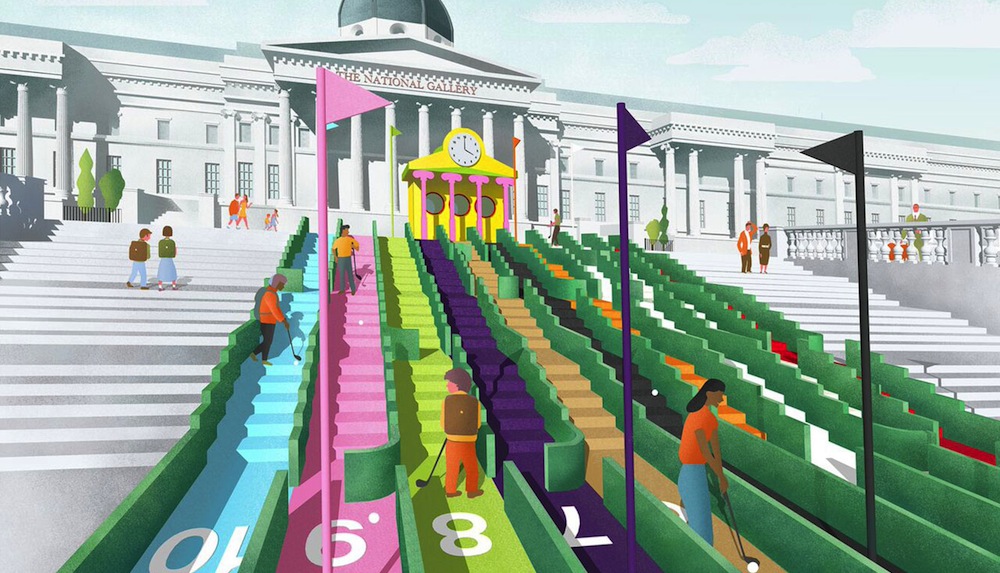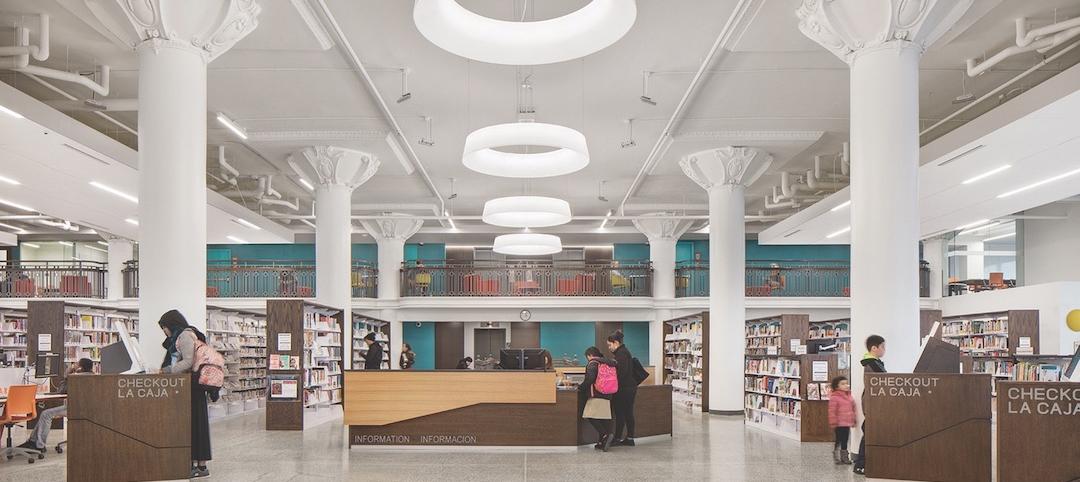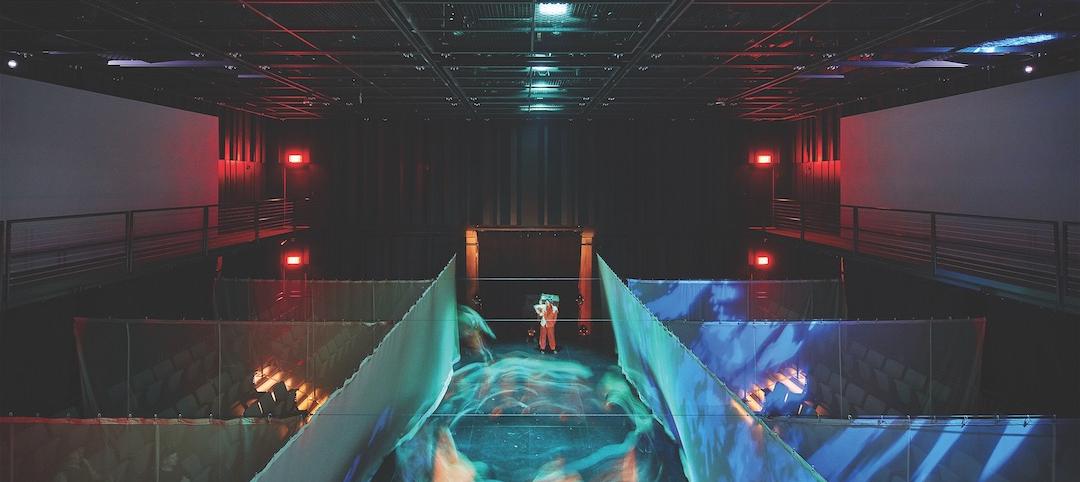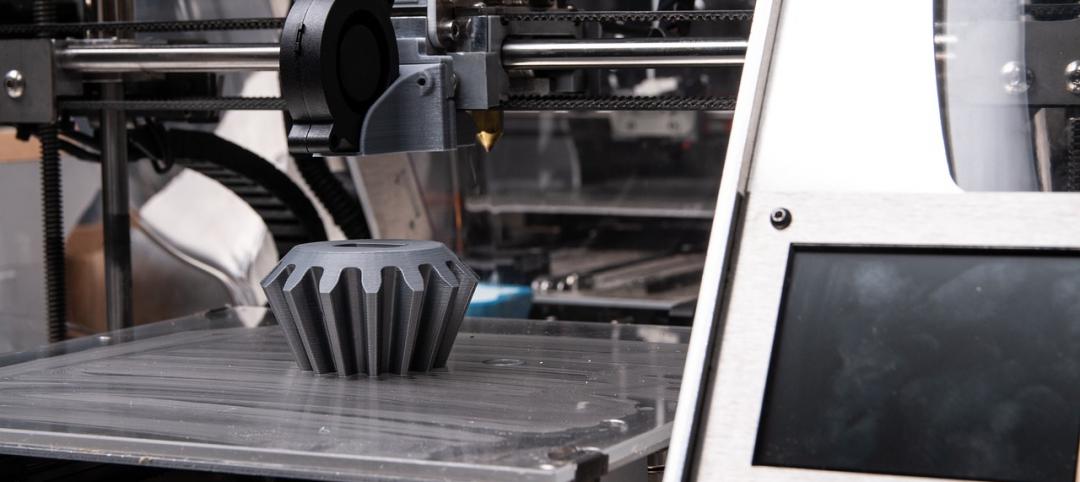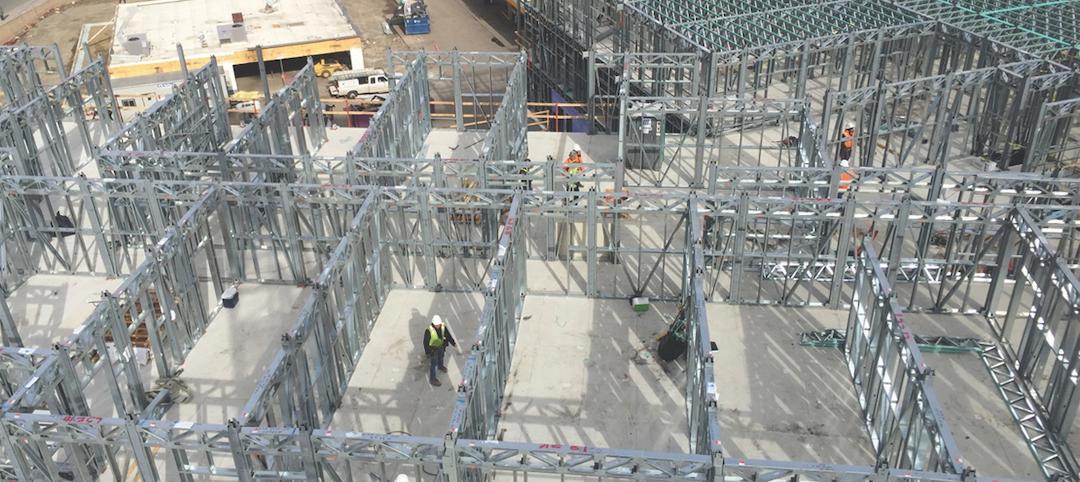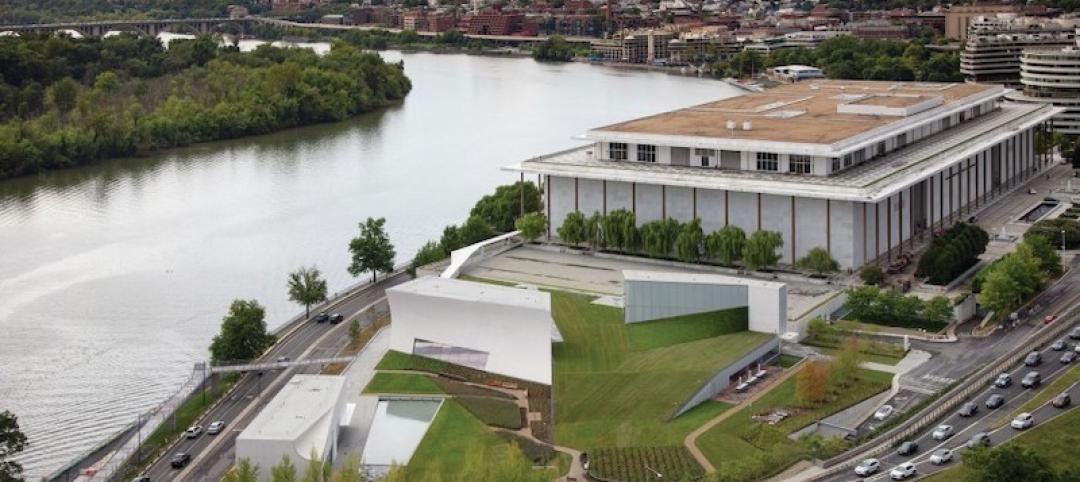The London Design Festival launched a crowdfunding campaign to raise money for one of the craziest mini-golf courses ever made.
The plan is to turn London’s Trafalgar Square into a colorful course this September. Notable designers, including Tom Dixon, Mark Wallinger, and the late Zaha Hadid, each get to create a hole of their own.
Eight holes have been designed for the mini-golf (known in the UK as "crazy golf") course, and they all feature much more than a windmill and a turf incline. Dixon’s hole integrates pneumatic tubes; players must navigate Wallinger’s circular maze; and Hadid designed a curvy, dual-level hole that traces the shadow of the square’s Nelson’s Column. The entries are bright, creative, and, to many putt-putt golfers across the universe, at least a quadruple bogey.
Paul Smith is the project’s visionary. The architect has held other events at Trafalgar Square over the years, including life-size chess and a robot show. Smith’s hole calls for a set of 10 multicolored stairways. The other designers who took part in the project are Camille Walala, Atelier Bow-Wow, HAT Projects, NEON, and Ordinary Architecture, the latter of which envisioned a hole where a player hits their ball into a large pigeon and watches it roll through its digestive tracks.
The project’s goal is to amuse both adults and children, and teach the public about the future of design.
The course “will attract a wide, public audience, and inspire the next generation of creatives,” as its Kickstarter puts it. “Thousands will be able to play the course, and millions more will watch and enjoy this experience, both in the square and through media.”
A little more than $5,000 has been raised thus far. There are still 42 days left to reach the $172,862 goal.
Related Stories
Giants 400 | Oct 24, 2019
Top 125 Retail Architecture Firms for 2019
CallisonRTKL, Gensler, MG2, NELSON, and Stantec top the rankings of the nation's largest retail sector architecture and architecture engineering (AE) firms, as reported in Building Design+Construction's 2019 Giants 300 Report.
Architects | Oct 11, 2019
SMPS report tracks how AEC firms are utilizing marketing technology tools
With thousands of MarTech tools and apps on the market, design and construction firms are struggling to keep up.
Healthcare Facilities | Oct 4, 2019
Heart failure clinics are keeping more patients out of emergency rooms
An example of this building trend recently opened at Beaumont Hospital near Ann Arbor, Mich.
Giants 400 | Oct 3, 2019
Top 30 Convention Center Sector Architecture Firms for 2019
LMN Architects, Gensler, Populous, Fentress Architects, and Moody Nolan top the rankings of the nation's largest convention center sector architecture and architecture engineering (AE) firms, as reported in Building Design+Construction's 2019 Giants 300 Report.
Giants 400 | Oct 3, 2019
Top 110 Cultural Sector Architecture Firms for 2019
Gensler, Populous, DLR Group, Stantec, and Perkins and Will top the rankings of the nation's largest cultural facility sector architecture and architecture engineering (AE) firms, as reported in Building Design+Construction's 2019 Giants 300 Report.
Giants 400 | Oct 3, 2019
2019 Cultural Facility Giants Report: New libraries are all about community
The future of libraries is less about being quiet and more about hands-on learning and face-to-face interactions. This and more cultural sector trends from BD+C's 2019 Giants 300 Report.
Architects | Oct 3, 2019
LEO A DALY wins Architect of the Capitol contract
The firm will help modernize some of the country’s most significant public buildings.
3D Printing | Sep 17, 2019
Additive manufacturing goes mainstream in the industrial sector
More manufacturers now include this production process in their factories.
Multifamily Housing | Sep 12, 2019
Meet the masters of offsite construction
Prescient combines 5D software, clever engineering, and advanced robotics to create prefabricated assemblies for apartment buildings and student housing.
Cultural Facilities | Sep 11, 2019
The Kennedy Center expands for the first time since its 1971 debut
The REACH, with three pavilions on a generous lawn, adds openness and light to this performance space.


